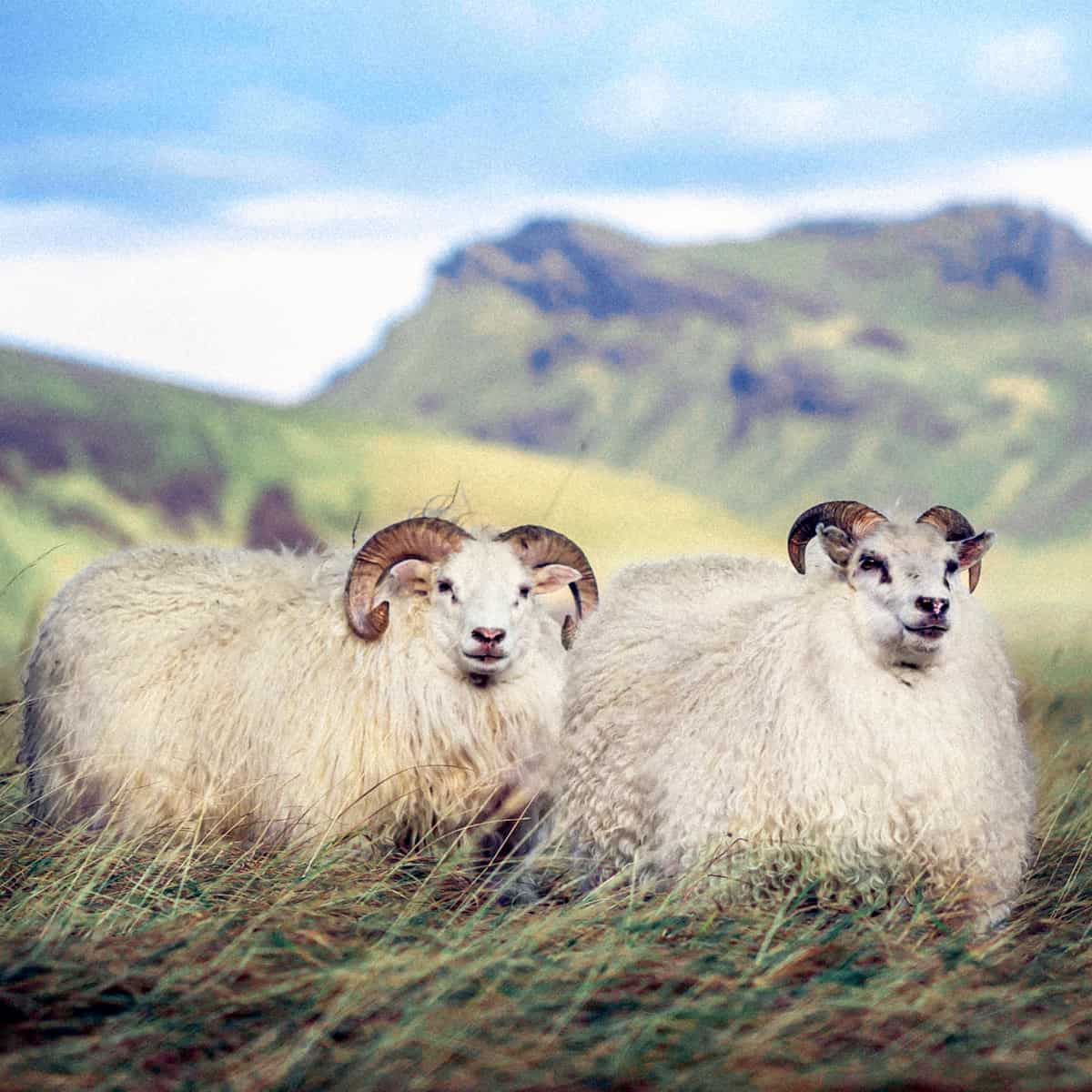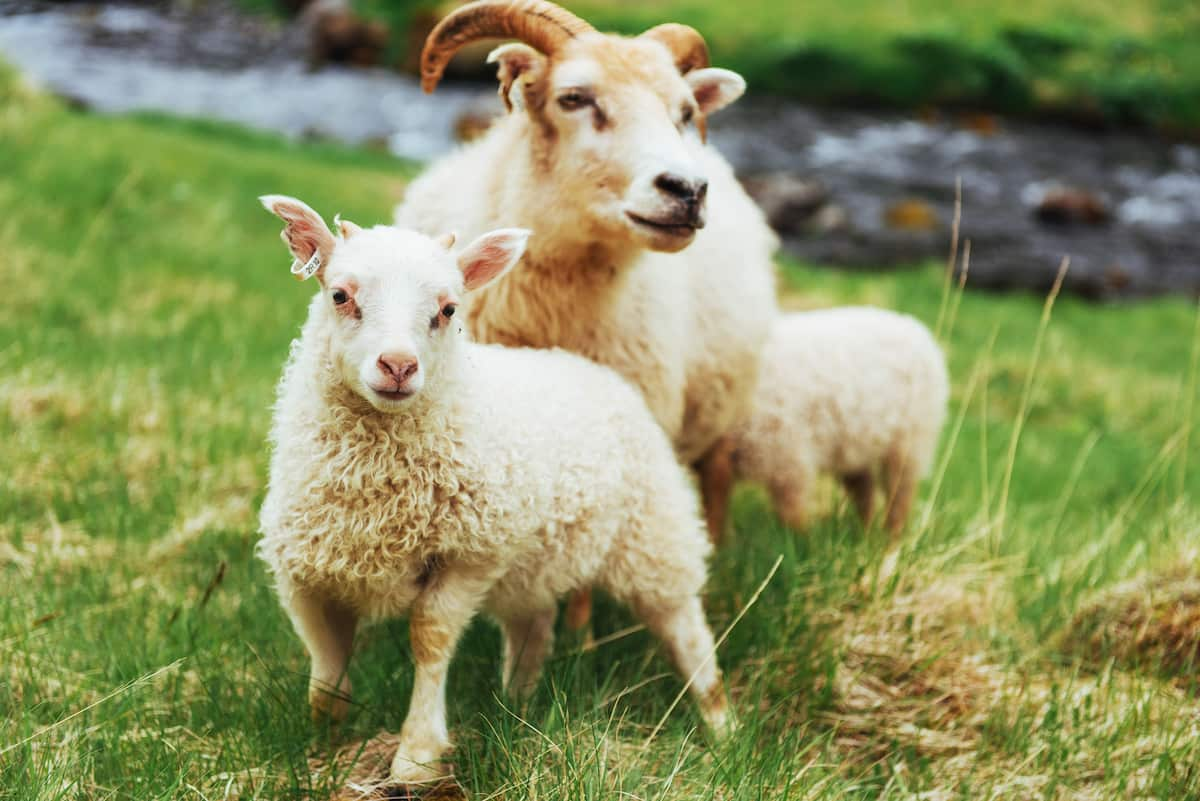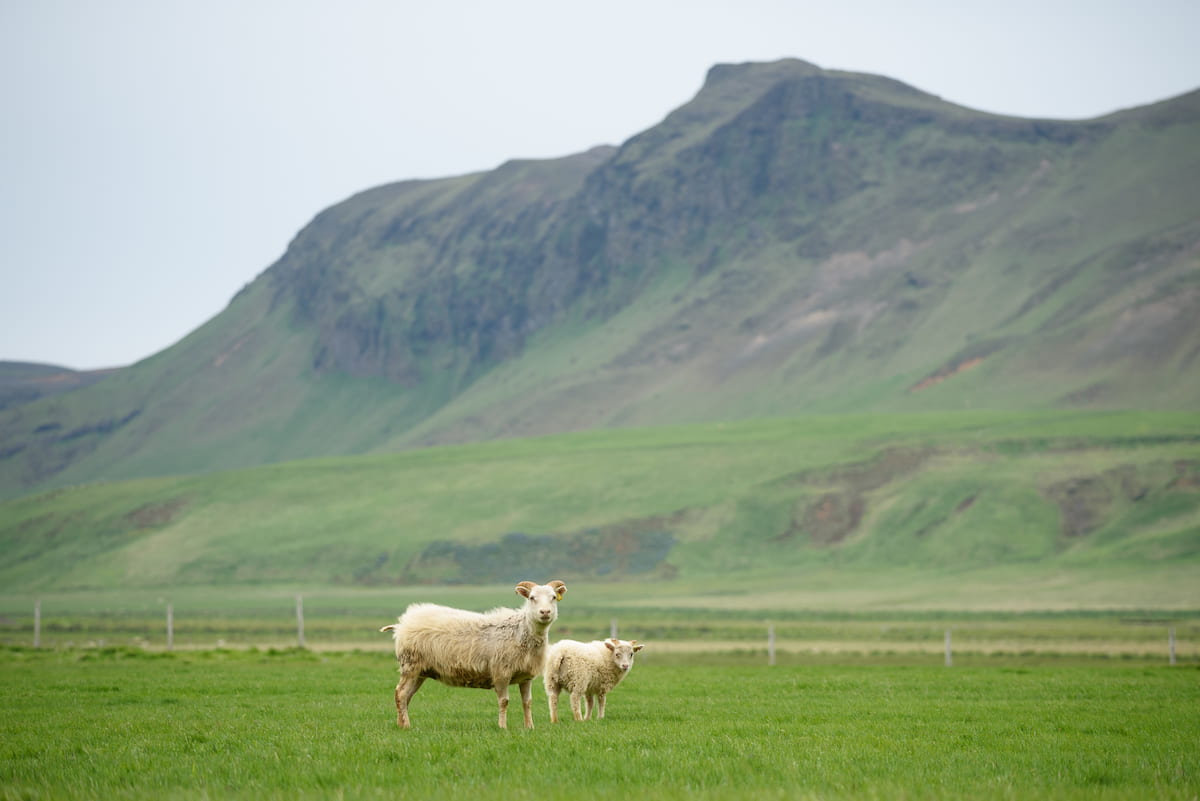You can spot Icelandic sheep roaming through pastures throughout the summer months. Icelandic sheep can survive in all types of climates, even those that undergo drastic changes. Lambs are provided with milk by the ewes, who live for long periods. Despite their ability to produce meat, Icelandic sheep are known for their wool production – their fleeces produce beautiful yarn. Black, white, brown, tan, and gray are some of the colors of the Icelandic fleece.

Icelandic Sheep Facts
Origin Icelandic Sheep Breed
Originally imported to Iceland by Vikings in the 9th and 10th centuries, Icelandic sheep are of the North European short-tailed breed that dominated Scandinavia and the British Isles during the 8th and 9th centuries. Icelandic sheep are today known as one of the world’s purest and oldest domesticated breeds, with farmers selectively breeding their flocks within the breed.
They have strong immune systems because the drastic cull has eliminated all diseases associated with crossbreeding. Iceland had around one sheep for every resident in the late 1970s when there were almost 900,000 sheep. Over the past few years, numbers have declined to just under 500,000.
Icelandic Sheep Characteristics
- Icelandic sheep are the largest short-tailed sheep, followed by Finn sheep, Romanov, Shetland, Spelsau, and Swedish Landrace sheep.
- Both ewes and rams may be polled or horned, giving the shepherd a choice. Wild Mountain Sheep in the Rockies have curled horns similar to those on horned rams. Ewes have C-shaped horns.
- Its faces are open, and its legs are also wool-free. In addition to being strong and healthy, the sheep are prolific. They have a long lifespan, with ewes bearing lambs into their 10th year and beyond.
- Icelandic sheep are a unique livestock breed known for their wool and hair. Icelandic sheep have a double coat consisting of a dense inner wool layer and a thinner outer layer of hair.
- Its softness, density, and lustrous sheen make Icelandic sheep fleece highly sought after by spinners and weavers.
- Icelandics, though classified as non-flocking breeds, have traditionally been herded by shepherds during winter. Free-ranging ewes will spread out aggressively during the summer to find the best forage. Instead of being shoulder-to-shoulder, the flock normally “trails,” one behind the other.
- There is also a reputation for Icelandic sheep being good mothers. It will take everything in their power to protect their young from predators.
- Despite this, Icelandic Sheep can also be flighty and skittish. When approaching them, use caution since they can be easily scared by loud noises or sudden movements.
- Lambs will reliably breed as yearlings in their first year. A ewe can produce until the age of 13 or older.
- The majority of ewes twins are in their second year and after that. Triplets are possible in about 15% of pregnancies.
- In addition to being lively, bright, curious, active, shy, flighty, calm, and friendly, ewes also have excellent personalities. Generally, they don’t jump fences or act crazy. Since hundreds of years ago, they have lived alongside their shepherds. It is easy for them to become pets.
- There are many variations of rams, including sweet, docile, aggressive, and protective. No matter how docile they appear, rams of all breeds should be kept away from children.
- Approximately 60 ewes can be bred by an adult ram. It is easy for Icelandic rams to settle their ewes, and they are extremely fertile. In most flocks, lambing will take place within 20 days.
- Iceland used ewes for dairy purposes. As a result of their high milk production, their lambs grow quickly and are suitable for dairy farming. It is easy for ewes to produce triplets.
- Rams weigh between 90 and 100 kg, while mature ewes weigh between 68 and 73 kg.
In case you missed it: Barbados Black Belly Sheep Facts: Origin, Physical Characteristics, Size, Pros, and Cons

Health Concerns of Icelandic Sheep
It is important to note that Icelandic sheep have a few specific health concerns. Parasites are the most common of these. Icelandic sheep are particularly prone to stomach worms, so they must be wormed regularly. Hoof problems are another concern with Icelandic sheep. It is common for Icelandic sheep to develop foot rot or other problems with their hooves.
Keeping your sheep’s hooves clean regularly and breeding resilient feet will help prevent these problems. Another disease that can affect Icelandic sheep is coccidiosis. An intestinal protozoan causes this disease, which can cause severe diarrhea in animals. The good news is that coccidiosis is relatively easy to treat and prevent with medication.
Pros of Icelandic sheep
- Because they were raised and selected for centuries by Icelandic shepherds to thrive on grass without grain, they do not require any nutrition from grains. Grain should not constitute a substantial part of their diet.
- Despite several feet of snow, Icelandic sheep will graze in a snowstorm without overgrazing. Keeping the grass at the proper height to improve the soil’s quality, they know when to mow and when to stop.
- Icelandic sheep have primarily been used for meat. The European market highly prizes a lean gourmet-style carcass of fine textured, light-colored, and mild-flavored meat.
- In addition to being grass-fed, it offers a distinct advantage to the producers of organic and natural meat and small farms.
- In addition to white and gray, Icelandic sheep also come in browns and blacks. The wool could also be dyed in bright, fun colors. Natural wool colors provide a gorgeous palette for making hats, sweaters, blankets, and more.
- Known for being excellent mothers, these sheep consistently give birth to twins without changing their diet or grains. Twin lambs have a short gestation period, and no complications occur during birth.
Cons of Icelandic sheep
- The main drawback for most people is the high initial cost of each. As a result of the breed’s rarity at the moment, its price is high.
- Lamb from Iceland tends to be leaner and milder tasting than lamb from other parts of the world.
- Icelandic fleece is not very attractive to commercial wool buyers, so there is no market for it. Direct marketing is a more effective strategy with this soft, colorful fiber.
In case you missed it: Dorset Horn Sheep Facts: Origin, Physical Characteristics, Size, Pros, and Cons

Conclusion
Icelandics are very adaptable and can be managed in a variety of ways. There are grass-based farms where they are seldom fed grain, dry-lot situations where they are fed daily, and every management system. Icelandic breeds are perfect for direct-to-consumer marketing because they combine the benefits of grass-fed farming with delicious flavor.
- Feed Your Flock for Less: Top 10 Tips to Save on Chicken Feed
- Ultimate Guide to Ossabaw Island Hog: Breeding, Raising, Diet, and Care
- Hatching Answers: The Top 10 Reasons Your Chickens Aren’t Laying Eggs
- Eggs and Economics: Breaking Down the Cost of Raising Backyard Chickens
- Defend Your Greens: Proven Methods to Keep Iguanas Out of Your Garden
- Ultimate Guide to Cinnamon Queen Chicken: A Comprehensive Guide for Beginners
- Ultimate Guide to California Tan Chicken: Breeding, Raising, Diet, Egg-Production and Care
- Ultimate Guide to Marsh Daisy Chicken: Breeding, Raising, Diet, and Care
- 10 Types of Chicken Farming Businesses You Can Start for Profits